|
|
|
|
Automatic
log scaling? Yes – and soon also automatic grading
– Lars Björklund (Head
of R&D; the Swedish Timber Measurement Council; Uppsala,
Sweden)
Lars gave
us the
background on the Swedish timber measurement council, of Sweden. Most
scaling is done by manned scanners (scalers record defect,
species, and grade) and at very high speeds
(1,000 pieces per hour). New
technology used includes: photo imaging to measure
ring-count, X-ray
technology for grades and log sorts, image analysis
to find rot, measuring MOE utilizing sound-waves, lasers are
being used to cube stacked volume of loads of pulpwood via a
drive-through, measuring pulp via photo imaging from cameras, harvester measurement
systems, and finally,
bone dry content of
chips is now measured via probes which can be hydraulically dropped
into loads
to get real time BD content and process the data into the payment
system. Click here to view the presentation.
|
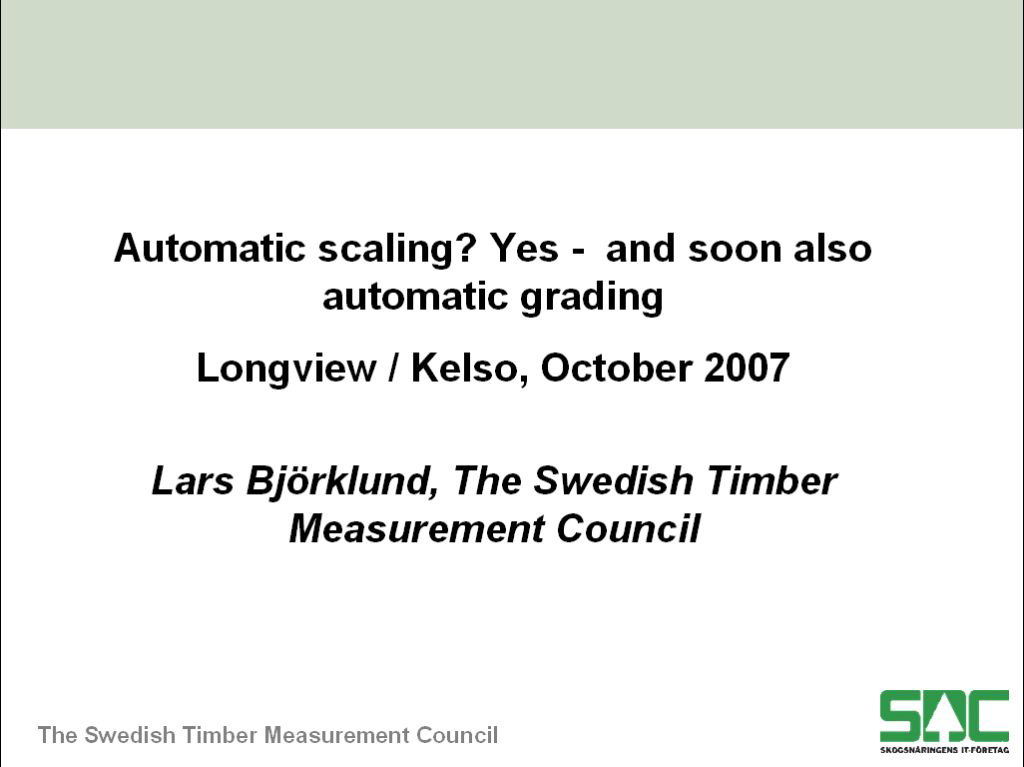
|
Log
breakage study
and automated scaling implementation – Bruce Moran (Scaling
Supervisor, Interfor, Campbell River,
B.C.)
Interfor
studied why
some contractors had consistently better results than others.
Their assumption
is that a faller needs to produce about 100 m3 per
day (20 mbf) and
that 10% would be lost to breakage. What they found was a strong
correlation
with yarding tree-length logs and breakage, vs. yarding manufactured
lengths
and giving the fallers enough time “doing more and making
more value by doing
less”. Determining cost of breakage vs. cost of decreased
production was the
key to finding the balance. Having fallers remove broken log sections
in the
woods reduced the breakage further by eliminating the chance that
already
broken pieces would increase in severity due to handling. They also had
to
track performance of logging contractors. Their philosophy is
“people do what
you inspect, not what you expect”. Brad stressed that you
need the support of
management. Click here to view the presentation on managing log breakage.
Interfor’s
work on scaling via scanners is focused mainly on smaller second
growth logs. Interfor is working with the ministry of forestry on
approval and
already has equipment in place. The System measures the log after debarking (so
under bark
measurement not a factor). It has the advantage of not requiring the
removal of
log bundles from water storage until needed (saving log handling costs
and
reducing the associated breakage). Log load information (boom and block
identification) will be recorded during the dewatering and scanning
process. It
is commonly agreed that scanners are accurate for determining gross
volumes,
i.e., lengths are accurate to ½ inch over 60ft, diameters
are accurate to
approximately 1/8”. Currently accepted methods of measuring
diameters (rads)
create less accurate volume results than scaling by scanner, which
measures in
very small increments. A log could be scanned 100 times and the result
each
time would be extremely consistent. Future challenges with the system
includes
the scanners inability to see rot and grade, however, these are small
compared
to benefits. Click here to view the presentation on Interfor's automated log scaling system |
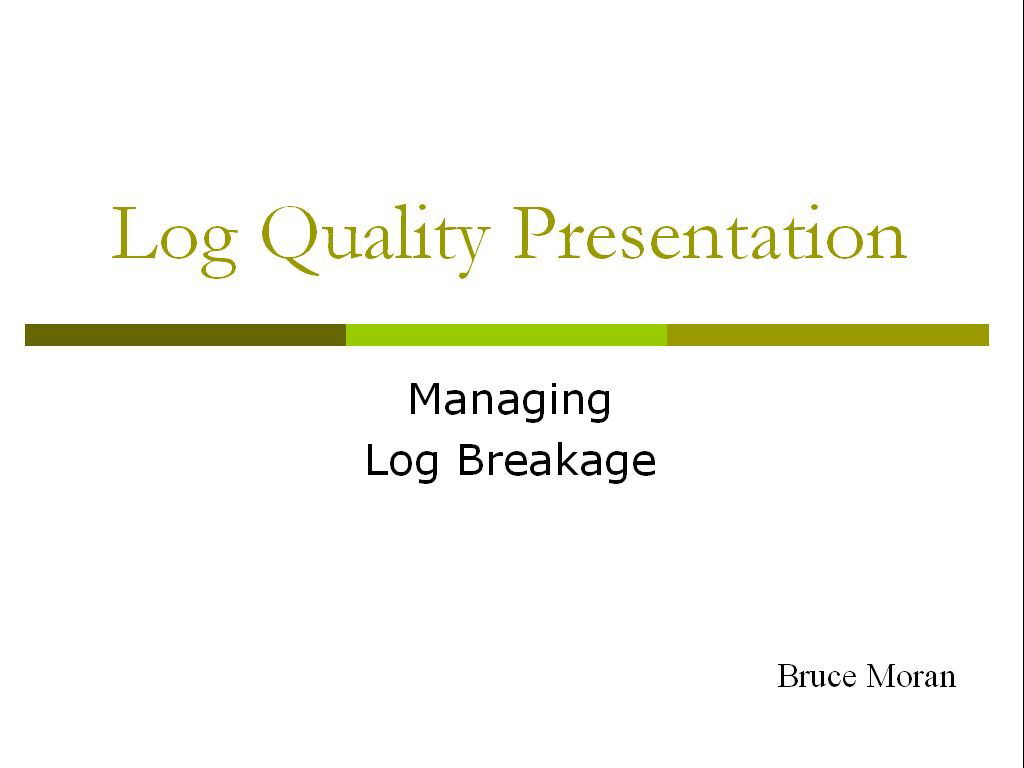 |
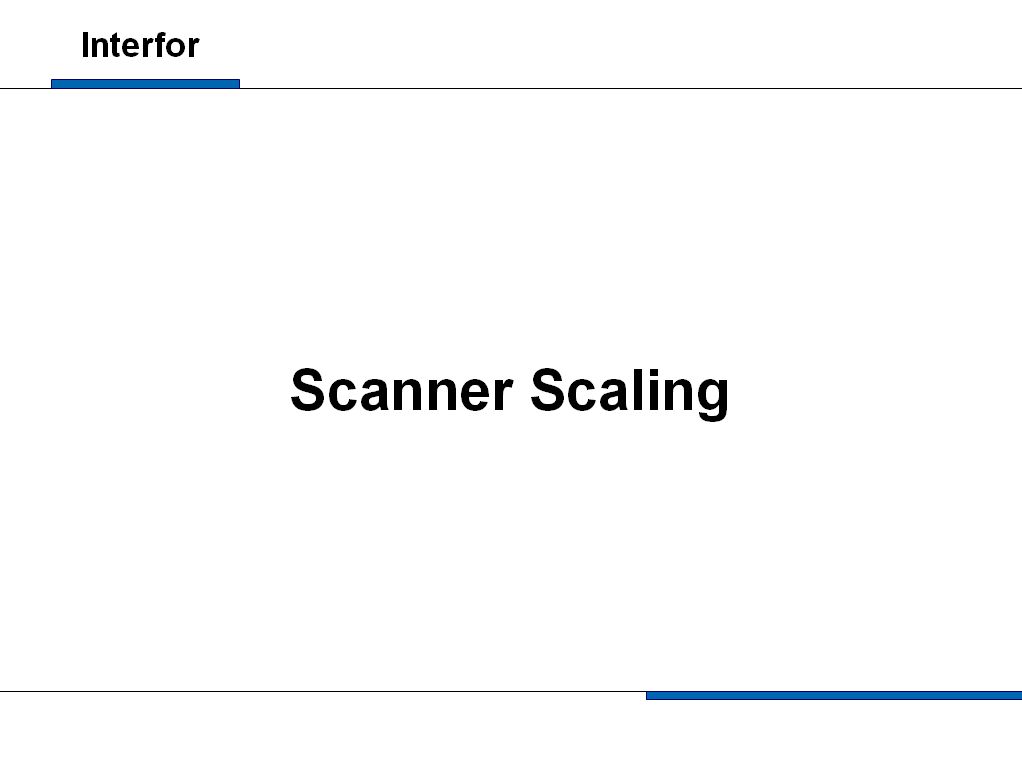
|
|
The secrets
to accurate acreage calculations – Jon Aschenbach
(Vice-President of Sales, Atterbury Consultants, Inc., Beaverton,
Oregon)
Jon
suggests
prioritizing the placement and number of timber cruise
plots. With GPS the acreage of timber stands can be
calculated with good accuracy. Some consumer grade GPS units ($70 to
$400) are
almost as accurate for acreage calculation as the $2,000 to $4,000
models. Jon
gave a live demonstration of the accuracy of this simple and
inexpensive GPS
system by showing the coordinates of the meeting room, tracking GPS
satellites
through the ceiling and roof of the building. Bottom line was that
given the
relative low cost of the new advanced GPS technology, data recording
hardware,
and data processing software, one can hardly afford to use the old
manual
methods given their lower levels of accuracy not to mention the
efficiency
issues. Click here to view the presentation.
|
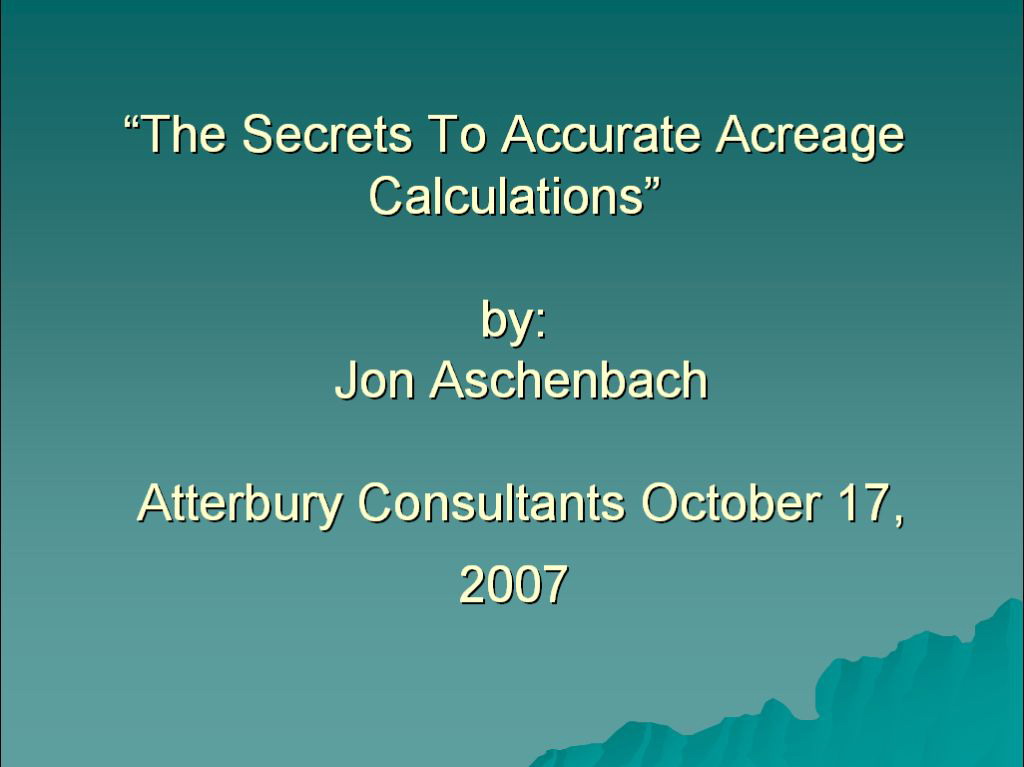
|
|
Significance
and recognition of exotic insect pests in standing and harvested
timber – James LaBonte (Taxonomic
and Survey Entomologist, Oregon Dept.
of Agriculture, Salem, Oregon)
The number
one way that exotic wood
boring insects get introduced onto North America is through solid wood
packaging. Many are already
established in the US
and Canada
and are
here to stay (e.g., emerald ash borer). Imports are increasing and thus
the
incidence of exotic bark beetles are as well. Some
insect species can look very similar; with one being rather harmless
and the
other a serious threat. Unfortunately, the number of taxonomists is
decreasing
due to retirements and no new taxonomists are in the pipeline. Jim and
his
colleagues are using graphics to develop guides so
“lay-people” can identify
the threatening insects. Jim brought us up to speed on the exotic
insect
threats that are currently considered a threat to North America, or already are. Click here to see the presentation.
|
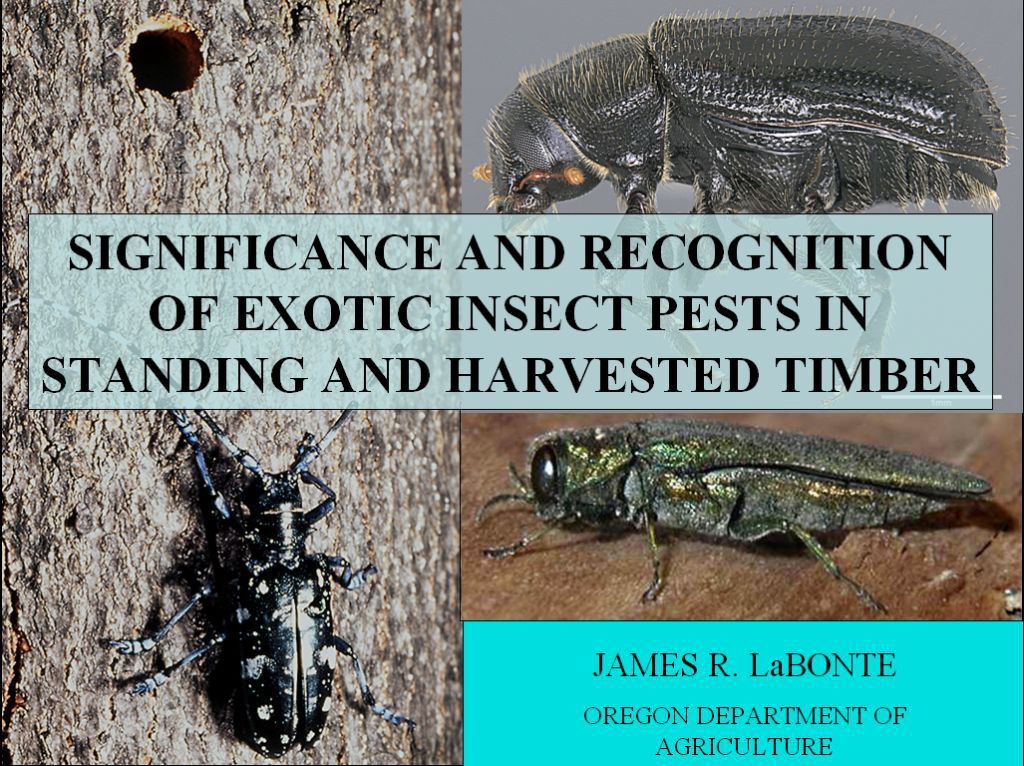
|
Scaling
deductions for logs with frost seams and grading logs with large
knots based on Northwest Log Rules Advisory Group (NWLRAG) –
Tom St. Laurent
(Manager, Yamhill Scaling Bureau; and Secretary, Northwest Log Rules
Advisory
Group, Forest
Grove, Oregon.
Tom
brought us up to speed on the developing NWLRAG rules for reducing volume and
grade for oversize knots and reduction of volume due to frost cracks (primarily
in western hemlock. Mill studies had determined that the current #2 sawmill
grade, which has an allowance of a 2 1/2” knot, was discovered to be too
lenient given the 65% construction grade lumber requirement, however, by
including the knot collar in young growth logs brought the grade back into
line. The current guidelines have improved the situation quite a bit. Scaler
variation is always a concern as knots characteristics have many different
degrees: size, density, placement, etc. Click here to see the slides on oversize
Frost
seams have been an ongoing problem in Hemlock. Generally scalers take a 1”
deduction for straight checks and pie-cut the spiral checks. This has helped in
the area of consistency, but more work needs to be done to determine proper
deduction, which is difficult to assess as all volume outside the scaling
cylinder is not to be considered when using Scribner scale. Bottom-line is that
things are better and more study is ongoing. Click here to see the slides on frost seams.
|
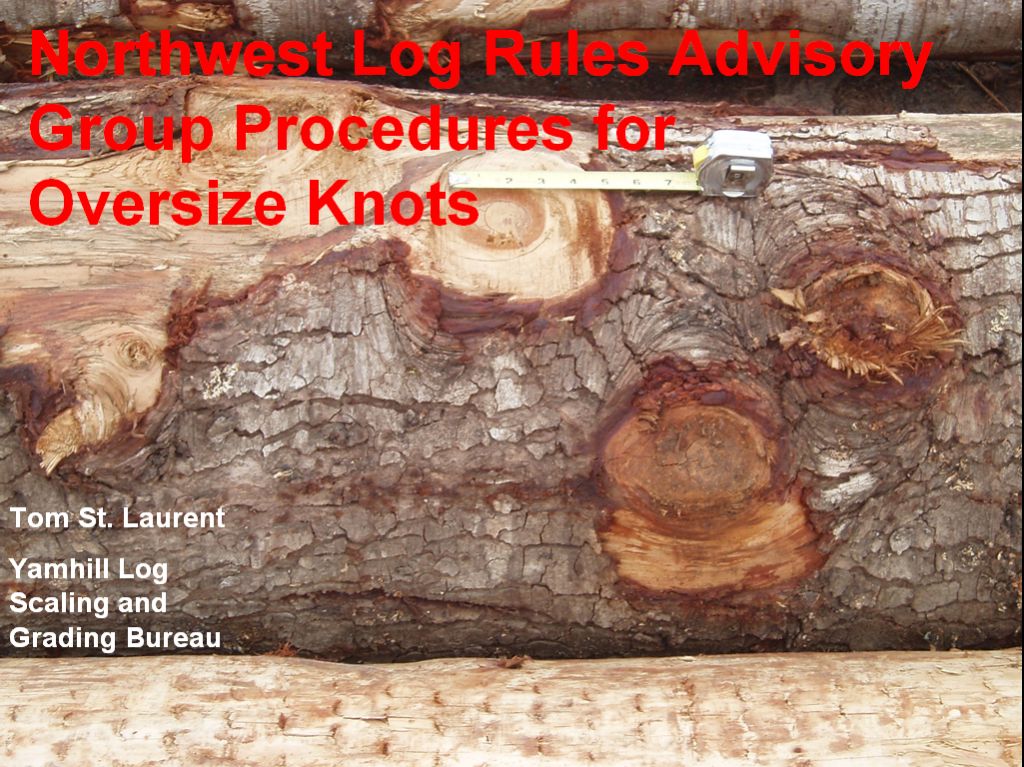
|
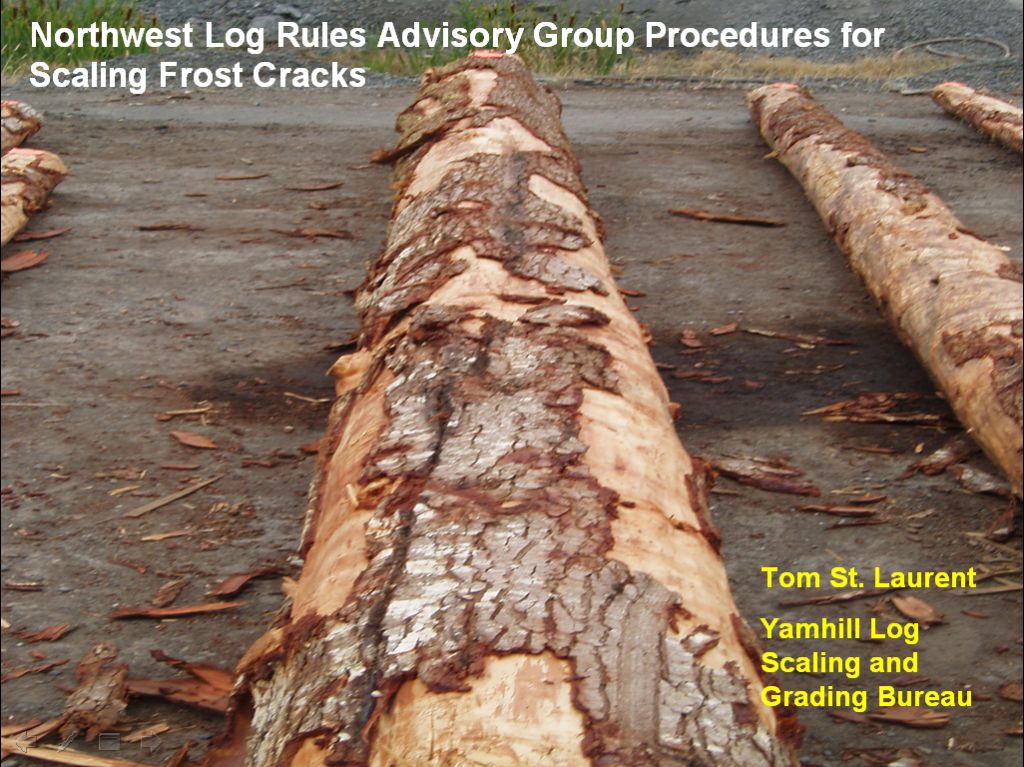
|
|
An overview
of log scaling in New
Zealand,
and some details of export (JAS) and domestic (3D)
scaling.– John Ellis (Group
Technical Manager, Toll Owens Logistics; and Managing Director of
Scaling
Research International, Mount Maunganui, New Zealand).
John brought us up to
speed on the overall status of the forest
products industry in New Zealand.
Some of the problems that the
industry is facing are the eroding value of the US dollar and increased
transportation costs. Export logs in New
Zealand
are scaled with JAS (Japanese Agricultural Standard), while most
domestic logs
are scaled via weight and the New Zealand
3-D method. Accuracy standards are +
or – 3%, scalers should agree on diameters with the check
scaler 62.5% of the
time and 95% of the log diameters should be within 2 cm. He gave an
overview of the scaling procedures
and methodologies for both JAS and 3D, which utilizes a unique formula
for
modifying stem form based on taper. Click here to see the scaling profile on New Zealand.
|
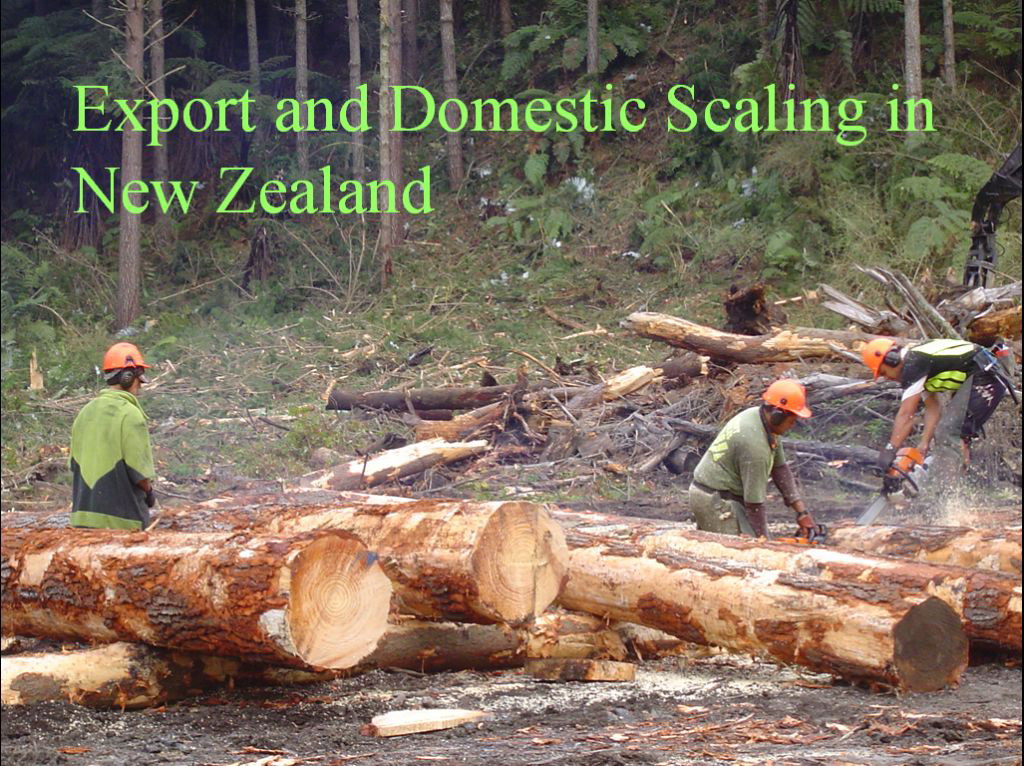
|
|
Scaling
study with artificial lights: can logs be scaled and graded accurately under
lights? .– Peter Dyson (Researcher, FPInnovations-Feric Division, Vancouver,
B.C.)
FPInnovations-Feric undertook a study to determine if logs could be scaled
accurately under artificial light conditions. As a starting point, they used 50
lux for young growth and 75 lux for old growth. The results were within 0.5%
excepting that the bigger more valuable grades, as a component, were outside
the tolerance. They then increased the lighting to 120 lux and the results
improved. Click here to see the presentation on scaling in dark conditions under artificial light.
|
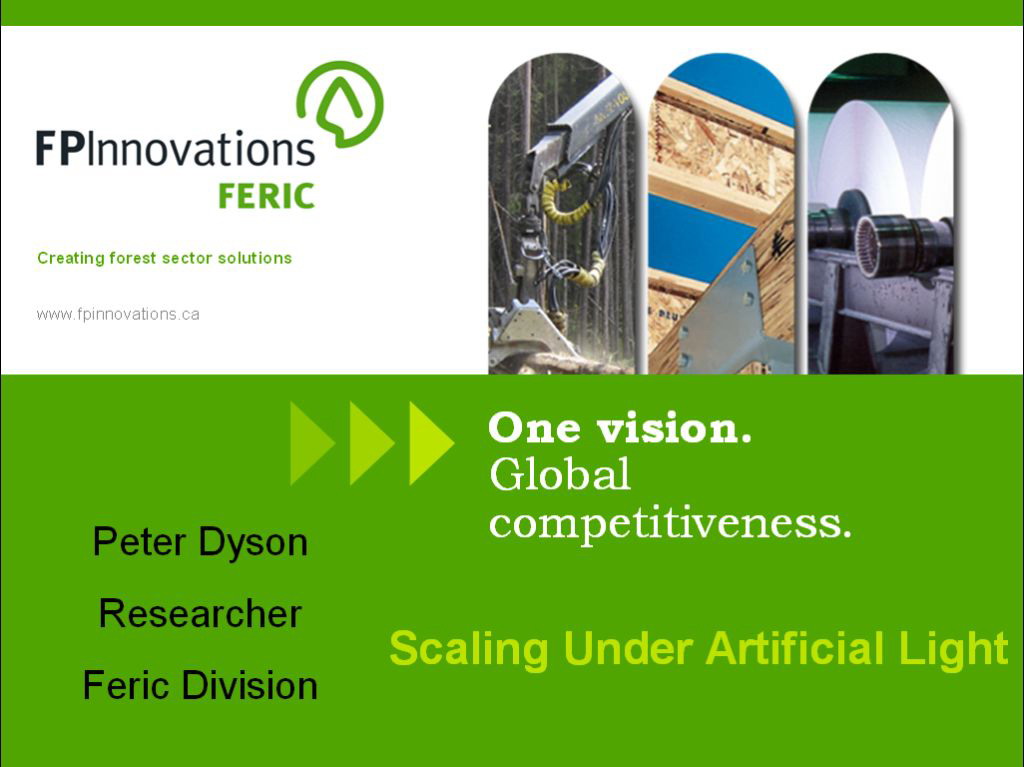
|
|
The
“Quick Cruise” Option for
the Idaho Department of Lands – Steve Fairweather (Mason
Bruce & Girard, Portland, Oregon)
This was a
project done
by Steve for the Idaho Department of Lands (IDL), and called the
“quick
cruise”. The pilot project was done on 848 stands covering
70,000 acres. The
IDL wanted to use a “stand based” inventory but
found that it was too costly to
do it the conventional way. The system uses stratification, tallies
tries by
species or dbh (no heights, no defects). Quite simply, this system
takes
advantage of the relationship between basal area and volume. Uses Vq/Vs = BAq/BAs. So far
the IDL is very happy
with the results and expanding this method across their timber land
ownership. Click here to see the presentation.
|
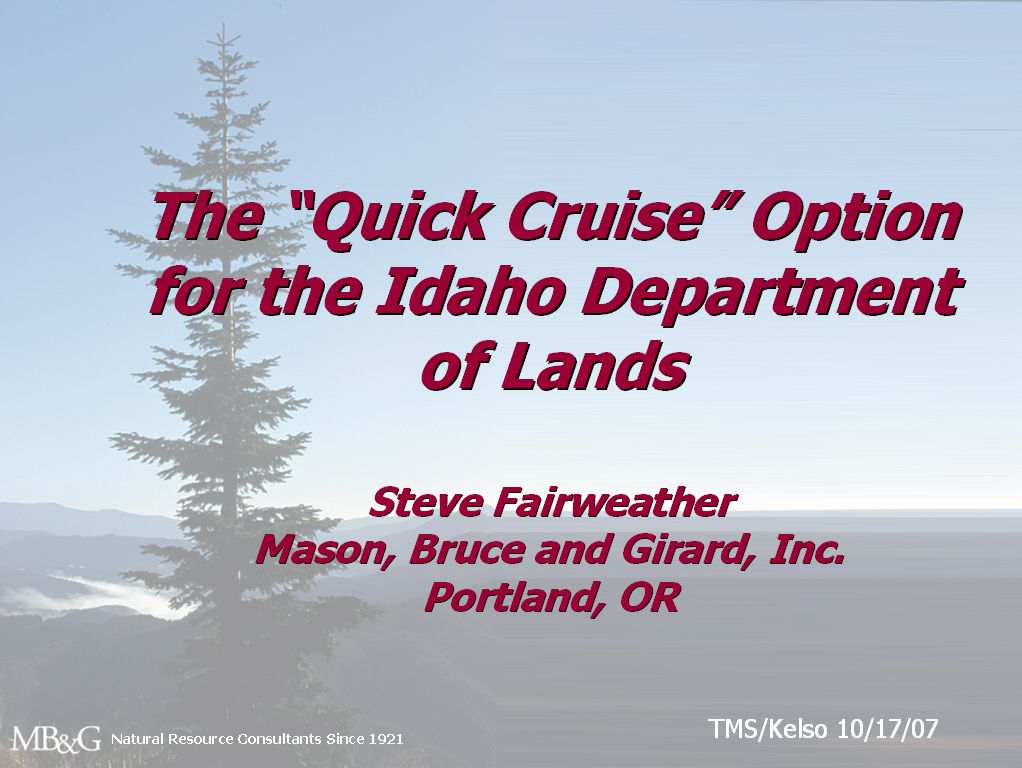
|
|
Automated
log merchandiser/scaler
to measure and buck for most value – Andy Dick
(Director, Logjiztix, Whangaparaoa, New Zealand)
Logjiztix
purchased a
prototype machine that merchandizes stems by scanning a tree length
stem and
then cross-cuts it into the most valuable log lengths. This system
evolved from
a manual “caliper and tape” based system, which
showed a lot of promise, but
was too heavily reliant on a workforce that had limited technical
ability. This
processor does 70 loads (2,200 tons) of logs a day. The machine scans
length
and diameter and bucks stems into logs lengths that maximize value and
gives
detailed production data in real-time. The benefits include smaller
landings,
reduced field staff, reduced truck time, reduced harvest cost, improved
safety,
better on time deliveries, platform for further technology (x-ray, more
scanners, MOE testing), and improved log value recovery. The system has
been
thoroughly tested and has shown that it can dramatically increase
profits. Click here to see the presentation on the Logjiztix log merchandizer and here to see the technical paper on the system.
Andy
also brought a presentation on a portable tool for log scaling (the
Hitman sonic tester) which can measure the stiffness of the wood fiber
of a log and thus is able to determine wood with a high strength ratio,
which is suitable for LVL or stress rated lumber. It is a small
handheld unit the measures the speed of sound-waves that travel through
the log. Click here to see a presentation on the Hitman sonic tester.
|
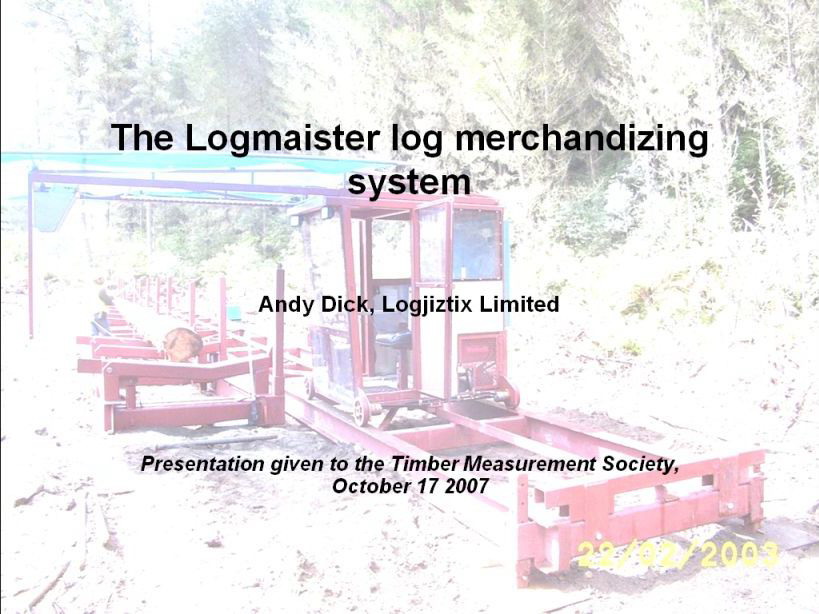 |
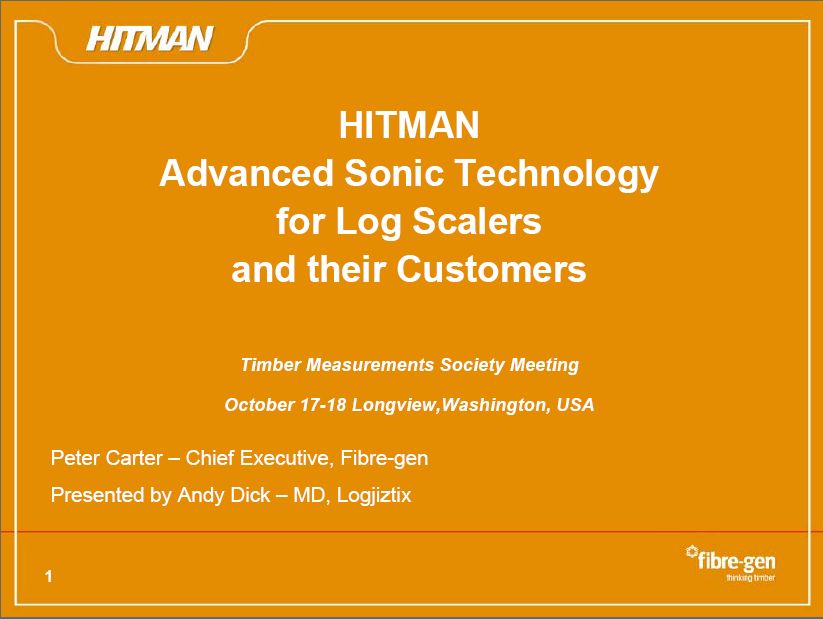 |
|
Recovery
from simulated sawn logs with Sweep – Robert Monserud (Team
Leader – Forestry Science Lab, USFS Pacific Northwest
Research Station, Portland, Oregon)
Robert and
his colleague,
Christine Todoroki wanted to assess loss from sweep (assuming straight
sawing
in a sawmill) and if in fact there was loss from ovality in a sawmill.
For the
sweep test, real logs were mapped and then simulated with increasing
amounts of
sweep (and crook). This approach was chosen instead of actual empirical
log
tests because logs are too variable and thus results would never be
conclusive
as opposed to measuring and mapping a log and then simulating (via an
optimizer
program, Autosaw) the same log over and over again with increasing
amounts of
sweep. On average, recovery dropped 2.4% for each 1” of sweep
(determined “bow
string” method) for 16’ logs. Whether the sweep was
constant (sweep), or 4’
from the end (crook) the results of the study did not change. Click here to see the presentation on recovery of simulated sawn logs with sweep.
In
addition to the sweep study, Robert and
Christine studied the effects of ovality of species and ran simulations
of
various degrees of ovality, both in terms of comparison with round logs
of the
same size and in terms of rotation. On average recovery was
best when sawing parallel to the major axis
and contrary to many older references was a bit better than that of a
round log
with the same volume. Click here to see the presentation on recovery from oval logs |
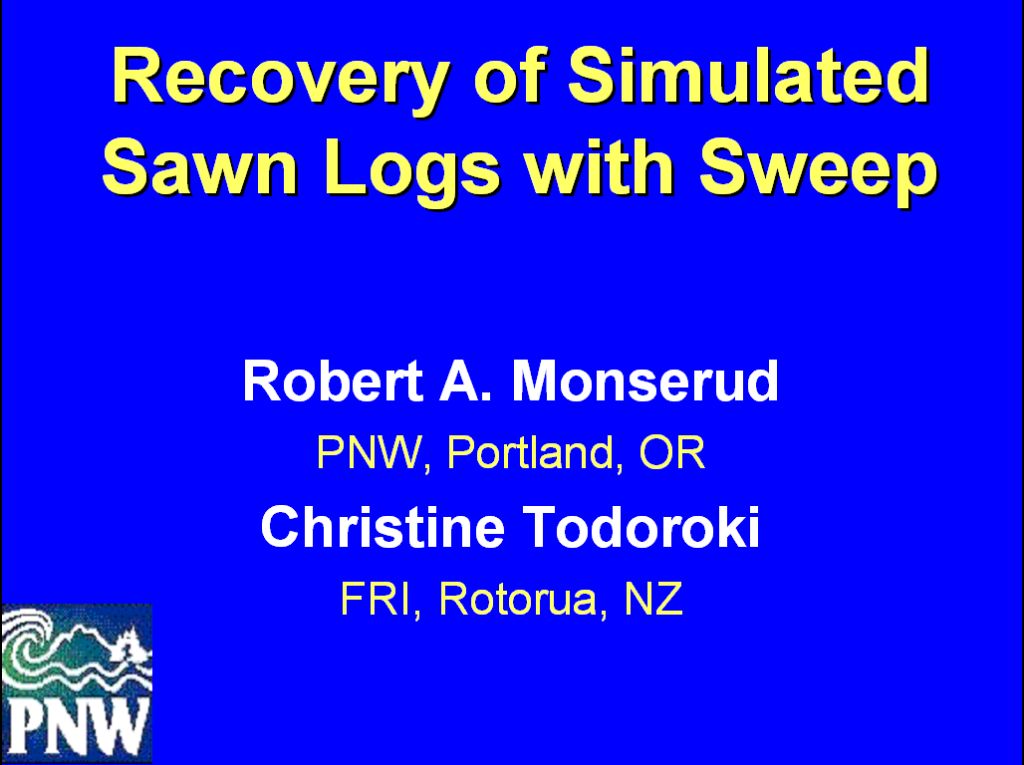 |
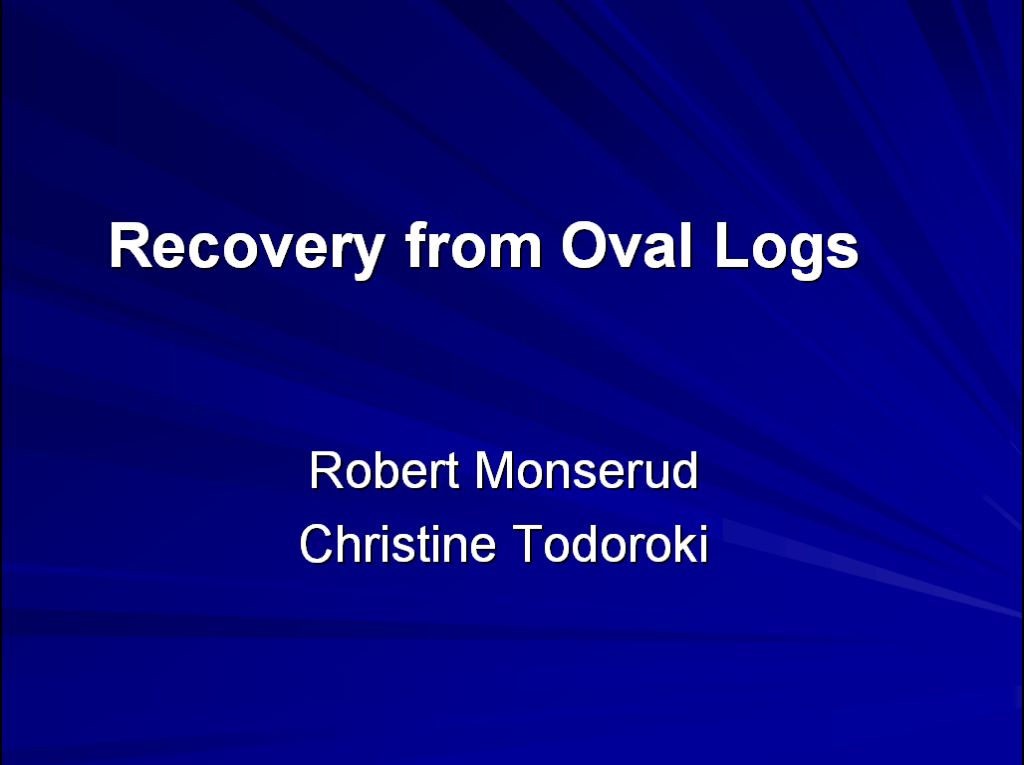 |
|













